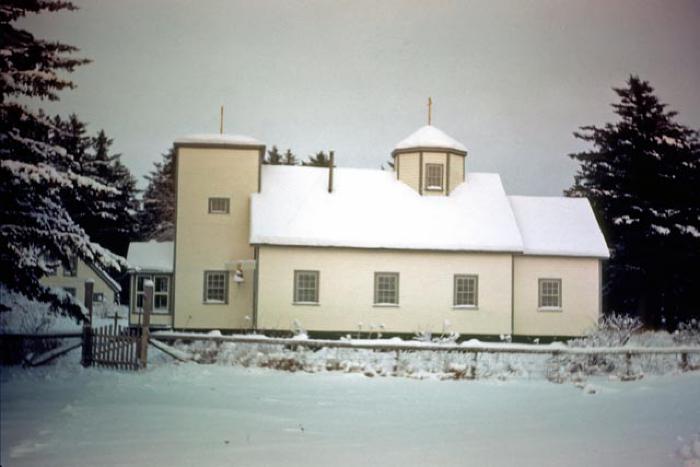Church — Agayuwik

The introduction of Christian religious practices to Kodiak by eighteenth-century Russian Orthodox priests and missionaries led to the development of churches and chapels in Alutiiq communities. Scholars believe that the first village chapels in the Kodiak parish were constructed in the 1830s and ’40s. Following a major smallpox epidemic, the Russian American Company built chapels in each of the major communities where they resettled Alutiiq people.
Early chapels included one dedicated to the Dormition of the All Holy Theotokos at Little Afognak built by the Seleznev family in 1832, and two built by the Russian American company in 1843: the Chapel of the Ascension of Our Lord in Karluk and the Chapel of the Nativity of the Theotokos in Afognak village. When Afogank and Kodiak were divided into two separate parishes just before the turn of the twentieth century, the Afognak chapel was reconsecrated as a church.
Historic records indicate that it was difficult to build places of worship in remote Alaska communities, far from supplies and knowledgeable builders. In 1822, when Kodiak’s original Church of the Resurrection was rebuilt, it took two years to stockpile the necessary supplies, and the Russian American Company sent carpenters from Siberia to assist. It took an additional three years to build the church, and within a decade the building had rotted so badly that plans for a new church were underway.
Villagers also had to rebuild their chapels. The present chapel in Karluk was designed and built in 1888 by Charles Hupp Smith with assistance from the Alaska Packers Company, a cannery in the community. Villagers paid for the structure, and the cannery transported the building materials to Karluk.
Today, each Alutiiq community has a chapel that is actively used by the Orthodox faithful. Full-time clergy do not staff most of these chapels. Typically, priests periodically from Kodiak, and in their absence, a member of the community acts as a church reader, caring for the facilities and performing some liturgical duties. Many of these chapels are recognized as important historic sites and listed on the National Register of Historic Places.
